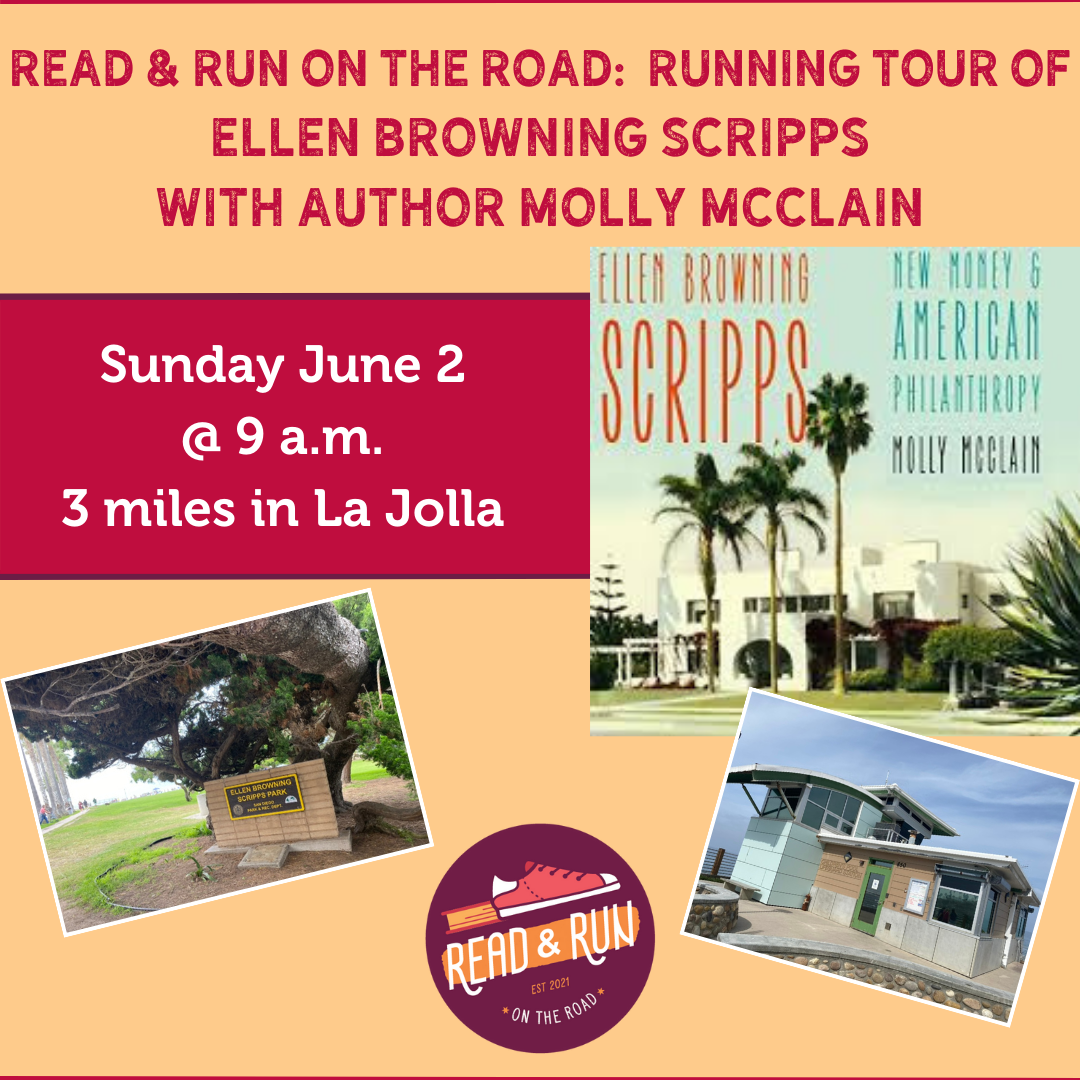Register here
Date and time
Saturday, May 11 · 8:15-10:15 a.m. PST
Location
Start: Kelly Street Neighborhood Park (6626 Kelly St, San Diego, CA 92111) Google Map
End: Linda Vista Branch Library (2160 Ulric St, San Diego, CA 92111) Google Map (0.4 miles from our starting location)
Refund Policy
No refunds
Agenda
8:15-9:30 a.m. Run a route inspired by The Gangster We Are All Looking For
9:30-10:15 a.m. Post-run discussion
About this event
On this 4.2 mile, easy-paced book club run, we explore some of the real-life places where the author’s young narrator lived in The Gangster We Are All Looking For. Set predominantly in the Linda Vista neighborhood of San Diego, the narrator immigrates from Vietnam to San Diego in 1978 at the age of six. In a story that oscillates between her memories of Vietnam and her new experiences in San Diego, we observe the world through the whimsical, elusive, and sometimes heart-breaking eyes of a child.
During the route for this Read & Run on the Road event, created and led by Chelsey Stone, we’ll stop at six different locations corresponding to the story and finish for a post-run discussion with light bites at the Linda Vista Library Branch (after all, author Lê Thi Diem Thúy went to this library as a child).
This is the main run for the book, but we thought, given the narrator does live briefly in an apartment in San Diego’s Little Saigon, it was only fitting to bring San Diegans to this part of our city. We are therefore leading a bonus run Thursday May 16 at 6 p.m. in Little Saigon. If you sign up for this run, you get a discount on part two.
TICKETS: Tickets are $10.
We are requesting you pay via Venmo or Zelle, in an effort to eliminate fees to you and to us (Eventbrite charges $3.44 per ticket). If neither of these are an option for you, email us and we’ll work something out.
Venmo: @Chelsey-L-Stone (last four digits of phone number: 2729)
Zelle: chelseygrassfield@gmail.com
The bonus run will be $10 for those who do not join this run and $5 for those who do. If you are registering for both, you can send one single payment of $15.
MEET: Meet at Kelly Street Neighborhood Park (6626 Kelly St, San Diego, CA 92111) between 8:00-8:15 a.m. on Saturday, May 11. The program will begin promptly at 8:15 a.m. You will check in with Chelsey Stone.
ROUTE: We’ll run an easy-paced (~11:00 minute/mile), 4.2-mile route with six stops in Linda Vista.
PREPARE: As this event is a book club run, we highly encourage you to read The Gangster We Are All Looking For prior to joining the run. You can borrow a copy from your local branch of the San Diego Public Library (here’s how to get a card if you don’t have one) or purchase from a local bookstore.
Optional: Join us for an online discussion of the book on Italic Type as we read the story in preparation for the run.
POST-RUN: After the route, we’ll finish at the Linda Vista Library Branch (2160 Ulric St, San Diego, CA 92111) 9:30-10:15 a.m. with lite bites and a chance to discuss the book.
INCLEMENT WEATHER PLAN: If weather creates unsafe conditions, we will hold the discussion at the Linda Vista Library branch 9:30-10 a.m. We will inform you no later than Saturday, May 11 by 7:00 a.m. if an alternate event will take place.
All registered runners will receive reminder details two days prior to the event.
Chelsey Stone moved last summer to San Diego from Chicago, where she was a guide with Read & Run Chicago. Chelsey is an avid reader, she even blogs about it. She loved creating routes based on her favorite books set in Chicago. Fortunately for her, founder Allison Yates has expanded her business to include Read & Run Tours.
Chelsey’s CPR Certified and the Chicago and San Diego running tour manager for City Fit Tours, where she regularly creates routes and leads tours that connect people to our cities’ histories through their most iconic sites.
Read & Run on the Road is an independently organized event with a license from Read & Run Tours, LLC, the country’s first and only organization that hosts running events inspired by books. Founded in 2021 by queer educator, freelance writer, and runner Allison Yates, the mission of Read & Run Tours, LLC and the city chapters is to use movement and stories to explore locations. Our community-focused run programming includes running tours, book club runs, author talks, and other literary-themed fun runs all inspired by books set in the cities where chapters are located, written by local authors. While connecting runners to the city’s stories, we also actively support literacy programs, public libraries, independent bookstores, and local authors.
Questions, comments, or concerns? Email Chelsey Stone at chelseygrassfield@gmail.com













































